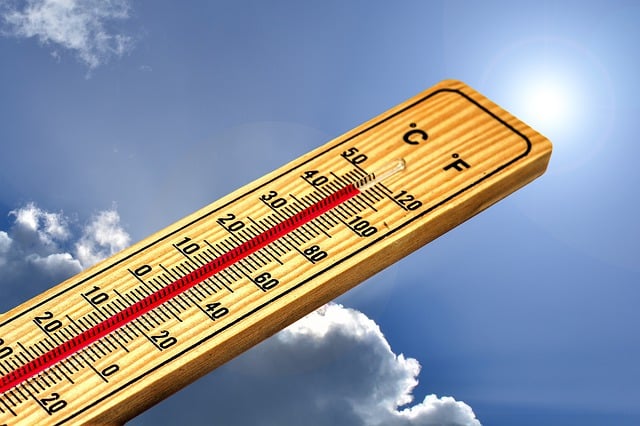Share This Article:

Sacramento, CA (WorkersCompensation.com) – For five years, workers have been waiting for California officials to address heat protection for indoor workers during extreme heat, and now officials seem poised to act.
The California Division of Occupational Safety and Health, or Cal/OSHA, announced on April 18 that it plans to revise proposed indoor heat rules for all workers statewide, except in correctional facilities. The proposed rule will require that employers either try to cool workplaces that get hotter than 87 degrees inside, or take action to reduce the risk of heat illness for workers. Those action can include slowing down production, shifting schedules or mandating more breaks, officials said.
Cal/OSHA had previously been scheduled to approve the new rule in March. However, the rule was pulled from the Occupational Safety and Health Standards Boards’ agenda by state officials in March when Gov. Gavin Newsom’s administration withdrew its approval of the rule. Officials said the rule would cost the state’s prisons more than expected.
Approved regulations cannot become law in California without getting approval from the Department of Finance, officials said. On the Wednesday night before the board meeting, the department withdrew its approval of the proposed rule, saying that in a late estimate, the California Department of Corrections and Rehabilitation estimated that the cost was billions more than workplace safety agencies had predicted.
The new proposed rule would resolve those cost concerns and allow the rule to be formally approved this summer. The rule will most likely affect workers inside businesses without air conditioning like warehouses, restaurants and manufacturing facilities.
California is one of five states with heat illness prevention rules for outdoor workers, and once the proposed rule is finalized, one of only three states that has indoor heat standards.
In 2021, the RAND Corp did an economic impact report found that the indoor heat rule would have an estimated $215 million impact on employers across the state for the first year, and about $88 million every year after that. Those costs would be mostly for employers to install air conditioning or fans, or to provide cool-down areas, the report said. However, the report said the rule would save money because it would cut workplace heat injuries by 40 percent by 2030.
The standards board estimated in 2021 that the California Department of Corrections would need to pay less than $1 million in the first year after the rule’s finalization, and less than $500,000 each year thereafter. Officials with the Department of Industrial Relations said at the time that about half of the state’s 1,500 correctional facilities are either already climate controlled or in cooler areas of the state that would not get hot enough to trigger the heat rule. When finance officials told corrections officials they had underestimated prison costs, the corrections department said its updated analysis determined there were more costs the state would incur.
Corrections spokesperson Albert Lundeen told CalMatters that the rule would require “immediate infrastructure investments in CDCR facilities across the state and would require the department to immediately request the Legislature to appropriate billions of dollars for extensive capital improvements.”
Lundeen said workplace injuries from extreme heat have been growing for years, and that the Corrections department is addressing them. Several of the department’s prisons are in desert towns, and many state prisons are mostly cooled using evaporative coolers or fans, he said.
A recent project that would install evaporative cooling units to cool the California Institution for Men in Chino, Cal., is estimated to cost the state $18 million for planning and construction. Another project to replace an old cooling system with HVAC at the Ironwood State Prison in Blythe, Cal. has been under construction since 2018 and is projected to cost $187 million.
Eric Berg, a Cal/OSHA deputy chief, said the agency will work to propose a separate rule to address heat for jail and prison workers. That process, he said, will likely require additional cost analyses and public hearings and could take anywhere from a few months to a few years.
According to the U.S. Occupational Safety and Health Administration, only two other states, Minnesota and Oregon, have rules for indoor workers. Nationally, legislation has stalled in Congress. President Joe Biden has directed OSHA to establish national heat standards for outdoor and indoor work, but the rules can take up to 10 years to finalize, officials said.
AI california case management case management focus claims compensability compliance courts covid do you know the rule emotions exclusive remedy florida FMLA glossary check Healthcare health care hr homeroom insurance insurers iowa leadership medical NCCI new jersey new york ohio osha pennsylvania roadmap Safety state info technology texas violence WDYT west virginia what do you think women's history women's history month workcompcollege workers' comp 101 workers' recovery Workplace Safety Workplace Violence
Read Also
About The Author
About The Author
-
Liz Carey
Liz Carey has worked as a writer, reporter and editor for nearly 25 years. First, as an investigative reporter for Gannett and later as the Vice President of a local Chamber of Commerce, Carey has covered everything from local government to the statehouse to the aerospace industry. Her work as a reporter, as well as her work in the community, have led her to become an advocate for the working poor, as well as the small business owner.
Read More
- Apr 02, 2025
- Liz Carey
- Apr 02, 2025
- Claire Muselman
- Apr 02, 2025
- Claire Muselman
- Apr 01, 2025
- Frank Ferreri
- Apr 01, 2025
- Chriss Swaney
- Apr 01, 2025
- Liz Carey




